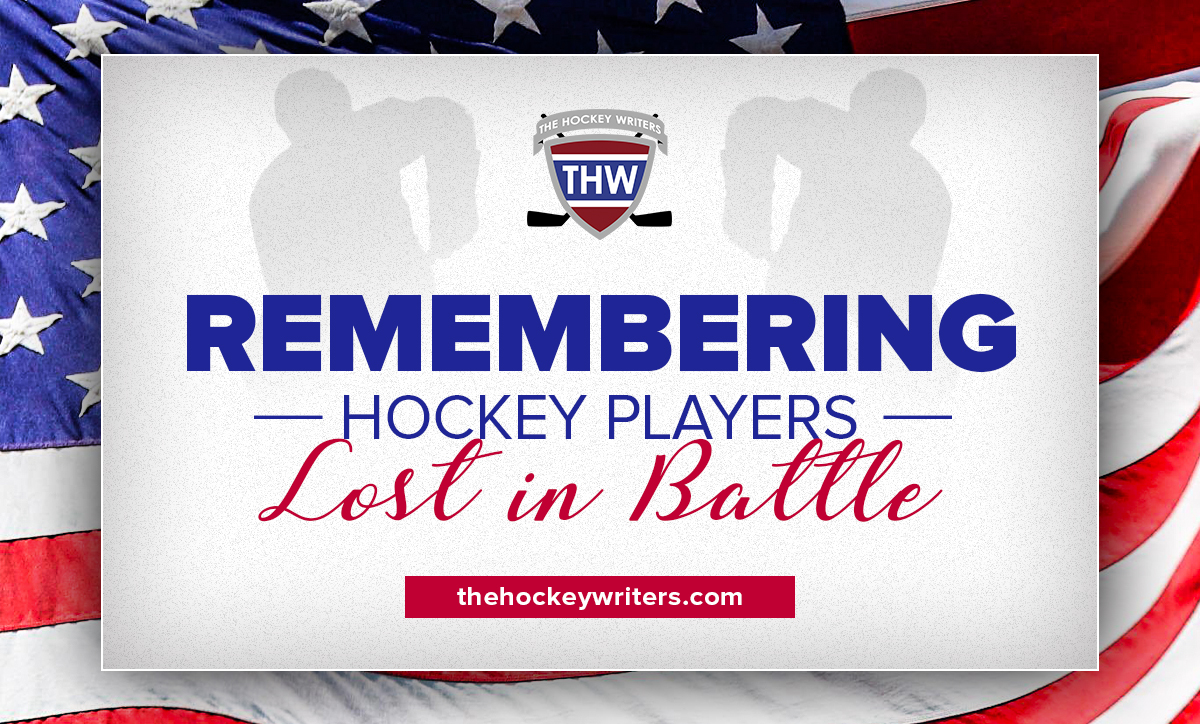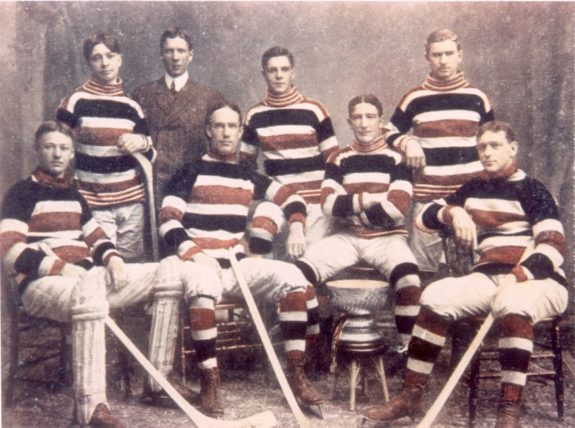On Veterans/Rememberance Day and Memorial Day, people around North America will celebrate and remember those who served and those who lost their lives in service to their countries. In Canada, Remembrance Day is commemorated on Nov. 11 each year and marks the end of World War I in 1918. It may also be commonly known as Armistice Day. The day intends to remember the fallen on both sides of the Great War (First World War).
The poppy is the symbol of Remembrance Day. In the run-up to Remembrance Day, replica poppies are sold by the Royal Canadian Legion to provide assistance to veterans, and you may see them worn by many sitting on the benches of hockey games across Canada.
On Nov. 11, the United States celebrates Veterans Day, a legal holiday dedicated to American veterans of all wars. In 1918, on the 11th hour of the 11th day of the 11th month, an armistice, or temporary cessation of hostilities, was declared between the Allied nations and Germany in World War I. Veterans Day pays tribute to all American veterans—living or dead—but especially gives thanks to living veterans who served their country honorably during war or peacetime.
The Hockey Writers would like to commemorate these days by remembering eight North American members of the hockey community who gave their lives while serving their countries in the military.
Hobey Baker
Hockey fans probably best remember Hobey Baker as the name associated with the trophy given to the nation’s top NCAA men’s ice hockey player. Winners are chosen not for raw skill, stats, or character alone, though those are important. They are selected for everything they do. The award was established in 1981 to honor one collegiate hockey player every year who demonstrates the same qualities of athletic excellence and sportsmanship Baker possessed.

In 1916, Hobey Baker joined the civilian air corps as World War I loomed. When the U.S. entered the war, he was one of the first Americans to leave for Europe. On Dec. 21, 1918, Baker received orders to return to the United States from his station in Toul, France. Dreading a return to an office, he decided to take one more flight, in a recently repaired plane. He took off in heavy rain, and the engine died a quarter-mile into the flight. His plane crashed nose-first into the ground, and he died in the ambulance minutes later, only 26 years old.
Baker was one of the first nine inductees when the Hockey Hall of Fame was conceived in 1945. He was also an excellent football player at Princeton, later inducted into the College Football Hall of Fame in 1975. He is the only person inducted into the Hockey and College Football Hall of Fames.
Joe Turner
Joe Turner was born in Windsor, Ontario. He had a stellar amateur and minor-league career before being called up to the Detroit Red Wings on Feb. 5, 1942, against the Toronto Maple Leafs at Olympia Stadium. This was his only game in the NHL. After that game, he was returned to Detroit’s American Hockey League (AHL) affiliate in Indianapolis, where he finished the season.
After the season, he enlisted in the United States Army, choosing this service due to both his wife being a native of Indianapolis and his father working as an electrician in Detroit. Having risen to the rank of second lieutenant, he was deployed to the European theatre of World War II in the winter of 1945. Unfortunately, like his NHL career, his time in combat only lasted one day.
On his first day in combat, Turner led an assault team through the Hurtgen forest to take out a German machine-gun position. He was wounded in the attack but, hearing the pleas of an injured comrade, set out with another soldier in a bid to rescue their compatriot.
He never returned. Originally classified as missing in action, on Jan. 12, 1945, Turner was listed as killed in action, the victim of German machine-gun fire. Originally buried in an unmarked grave in Belgium, Turner’s remains were discovered and returned to Windsor in 1950. He is interred at Victoria Memorial Cemetery.
In his memory, the International Hockey League named their championship trophy the Turner Cup.
Dudley Garrett
Garrett played just one season of professional hockey, splitting the 1942-43 campaign between the AHL’s Providence Reds and the NHL’s New York Rangers. As a member of the Canadian Navy, he lost his life while working on a destroyer escort run off the coast of Newfoundland when a German U-Boat torpedoed the ship. He was only 20 years old.
The Garrett Award is presented to the AHL’s most outstanding rookie each year, as voted on by the league coaches, media, and players.
Frank McGee
Remembered for his prolific scoring on the ice, McGee was among the Hockey Hall of Fame’s 14 inaugural inductees in 1945. He earned the nickname “one-eye” after he lost sight in his left eye while playing for the Canadian Pacific Railway team in 1900 after being struck by a puck. Despite his injury, he joined the Ottawa Hockey Club in January of 1903, a team that became known as the “Silver Seven.” McGee remained a staple of the team’s dominant offense but retired from hockey prior to the 1907 season with 135 career goals in just 45 games.

Despite having vision in just one eye, McGee was able to trick the doctor into believing that he had vision in both eyes. According to his nephew, when he asked to cover one eye and read the chart, he covered his blind eye, and when required to cover the other eye, he switched hands instead of eyes. He was killed on Sept. 16, 1916, at age 34, while fighting in the Battle of Flers-Courcelette during the Somme Offensive. His body was never recovered. McGee is one of 11,169 unfound Canadian First World War causalities commemorated at the Canadian National Vimy Memorial in Pas-de-Calais, France.
Scotty Davidson
Davidson was a junior star until he moved on to the Toronto Blueshirts of the National Hockey Association, the forerunner of the NHL. In 1913-14, he led the Blueshirts to a Stanley Cup championship. He was among the National Hockey Association’s leading scorers in the two seasons he played for the Blueshirts.
Davidson enlisted for military service after World War I broke out in 1914 and was killed in Belgium on June 6, 1915. A military record states that he was killed instantly by a shell that exploded near him in a trench. He was 23 years old and was posthumously selected for the Hockey Hall of Fame in 1950.
George Richardson
Richardson was considered one of the finest amateur hockey players of the early 20th century. He rejected offers to turn pro, as he came from a wealthy family and didn’t need the money; James Richardson & Sons was one of Canada’s largest grain exporters at that time.
In 1914, Richardson was among the first group of volunteers from Kingston to join the British war effort. On the night of Feb. 9, 1916, he was leading a patrol spotted by German forces that opened fire. The patrol was almost wiped out. Richardson, though severely wounded, made it back to the British trenches but died of his wounds the following morning.
Russell McConnell
McConnell was an accomplished amateur hockey player and received an offer to play professionally for the New York Rangers. He was a member of the crew of HMCS Raccoon when the armed yacht attempted to chase down the German submarine U-165 in the Gulf of St. Lawrence. Contact was lost with the Raccoon, and McConnell’s remains washed up on Anticosti Island, identified by his school ring. His remains were committed to the sea with full naval honors.
Norbert Sterle
After playing at the University of Illinois and the Kansas City Americans, Sterle did spend some time with the Chicago Blackhawks but never appeared in an NHL game. He was killed while serving in Italy on Nov. 19, 1943, after the German Army abandoned the Barbara Line.
There are also some that played at American Universities that lost their lives in battle. The players include Tom Kennedy (Afghanistan 2012), Derek Hines (Afghanistan 2005), Steven J. Riggs (Vietnam 1968), and Tom Brindley (Vietnam 1968).
Related: Buffalo Sabres’ History with Canada
This list is not meant to be comprehensive but rather represents a group of players selected to help us remember the day set aside to reflect on the men and women who gave everything so that the rest of us can enjoy peace and freedom. We believe that it’s worth taking a moment to remember the sacrifices made by those who played the game we love.
Sign up for our NHL History Substack newsletter
